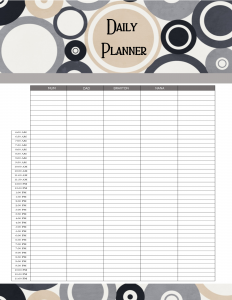Remote First Mon 20th April, 2020
Creating a Family Charter
My household has set up a family charter to address the whole work/life balance problem during lockdown. I’d love to be able to tell you that we planned this from the start and that it was the first thing we did. But like most learnings, it came about from frustration and learning about what wasn’t working for our family.
To state the obvious, working remotely surrounded by your partner and family is a much different beast from the odd day working from home. Doing it amidst a global pandemic is even more stressful.
It became apparent to me after Day 2, when my wife and I had our third altercation. We really needed to set some ground rules so that we could survive working from home with a 4-year-old. We sat down and did a mini-retrospective on what was and wasn’t working for us and made sure we were much more explicit about the house rules.
I mean, if we recommend team charters, why not a family charter?
Note: The 4-year-old refused to sign off on this. He’s been placed in isolation until further notice.
What wasn’t working for us:
- Both of us sharing an office space and trying to be on calls/video conferences at the same time.
- Interrupting/being interrupted when trying to do “deep work”.
- Assuming the other person was available for general conversation when they actually weren’t
- Not knowing who had meetings scheduled, leading to schedule conflicts
- Everyone constantly asking, “Has anyone seen the 4-year-old recently?”
- Not connecting as a family and being present
So we took most of the basic concepts related to setting up a team charter and applied them at home.
Staying in sync:
Despite all being “co-located”, we were woefully out of sync. So the first step was to get a shared calendar up and make our individual schedules more transparent. You could do this with a shared online calendar, but a low-fi physical board would serve as a touchpoint and a way to start and plan the day together over a cup of coffee.

This also allowed us to plan child-care duties. We found that splitting the day into shifts worked better for us. Knowing that you had a morning or an afternoon shift meant you got more dedicated work time with less context switching.
It seems silly, but scheduling the housework also helped. So we now do that once every week, as a family. It also avoids someone randomly vacuuming in the middle of the day, when you’re on a call (don’t underestimate the powers of procrastination or nesting).
Making the work visible at home had the same benefits as at work! We were now able to see the system in all its ugliness and then optimise it.
Establishing distinct work/sanctuary zones:
This was really beneficial. It may seem easy to just plonk yourself and your laptop down on the couch, but we discovered some downsides to that:
- It’s not apparent to those around you whether you’re on Facebook and approachable or actually working and don’t want to be disturbed
- It takes away a sanctuary zone from other family members. So if they want to chill-out with an episode of Tiger King, they no longer feel like they can.
So we decided to also be explicit about where the “work-zones” were. If you were there, you were working. If you were not, you were fair game for general chit chat.
I mentioned earlier that my wife and I had a shared office. It was fine when we both did the odd day at home (and not at the same time), but it was clear we both needed our own space. Luckily, we have a covered outdoor deck, so I set up another workspace out there that either of us could use (Um, make sure this is properly waterproof if you try this). I can now BBQ and work at the same time!

We’re lucky that we have the space to do that, but the point is you probably need dedicated areas that are isolated from each other if you’re on the phone a lot.
Communication:
Another thing that might seem silly is that you have to be more explicit about communication styles during this time. Quite a few of our early altercations were around being disturbed whilst trying to work, so having some ground rules in place for that helped greatly.
We tried not to disturb each other if one of us was in a work zone. If there was something we wanted to chat about, we’d message the other and follow up on it later that evening. I guess you could also put up a parking lot for discussion at dinner.
Having predefined signals is also useful. A closed door or having headphones on signifies to the family that you’re concentrating. Having a sign on the door that says when you expect to be done is a nice gesture.
Etiquette:
There were a lot of posts on social media early into lockdown related to finding out new things about your partner.

Well, I discovered that my wife was a “pacer”. She can’t sit still when on a phone call and would aimlessly wander around the house. Needless to say – she now had an approved route.
Small things like tidying up after yourself also made a big difference. It’s one thing being a bit messy at home, but when the home is now your office, that clutter can impact your day-to-day productivity.
As a rule of thumb, just be consciously thoughtful about how your behaviour could potentially impact others. Sometimes we’re so comfortable with family that we don’t give them the same courtesy we do to our work colleagues.
Staying sane:
Everyone has their own resilience rituals. It doesn’t really matter what they are as long as you have them and use them. Don’t wait until you’re too stressed to start.
- I make sure I meditate daily. For me, it lowers my anxiety levels so that I approach the day much calmer and not in an already heightened state.
- Digital downtime: Set up an end-of-day anchor where you stay away from work email and Slack.
- When I’m on social media, I’ve been trying to add some positivity and kindness into the echo chamber. There’s enough gloom out there.
- Get outdoors for some sunshine and fresh air.
- Be kind to yourself. These are challenging times. We’re all doing our best.
If you ever want to chat and have a virtual beer – let me know. I found a tremendous virtual background for Zoom. I’ll meet you at the pub.

If you want to learn more of the techniques we at Equal Experts use to build high-performing remote-first teams watch this webinar.


